200 Eleventh Avenue: Review and Ratings
between West 23rd Street & West 24th Street View Full Building Profile
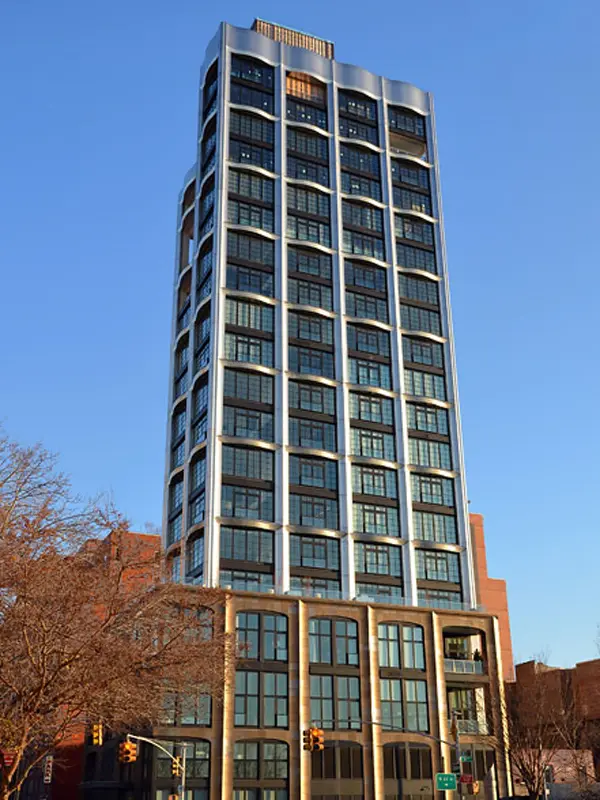

A luxury residential condominium building overlooking the Hudson River, 200 Eleventh Avenue in Chelsea, has a very, very rare apartment amenity: its own private garage space. The space is not in the basement, but actually in the apartment, or at least the vast majority of them.
That normally would be enough to qualify the building as unusual and very desirable, especially with its location and vistas.
The very impressive 19-story building, however, has more going for it.
The 16-unit building, which is at 24th Street, has been designed by Annabelle Selldorf for GAIA House LLC, a partnership of Youngwoo & Associates and Urban Muse.
Ms. Selldorf is well-known for her design of the interior of the Neue Gallerie on Fifth Avenue at 86th Street and the Abercrombie & Fitch store on Fifth Avenue at 56th Street. Steven Kratchman was the architect of record.
The building was completed in 2010.
Bottom Line
This building has spectacular views of the Hudson River, a prime Chelsea location, interesting and very attractive architecture and large apartments that come with garage attached, literally.
Description
The bottom and top of 200 Eleventh Avenue have two completely different and equally stunning façades.
The former is a gun-metal terracotta with protruding piers and an arched and curved cornice with four-pane windows.
The latter, comprising the setback tower, is stainless steel with multi-paned windows and curved balconies with glass railings.
The overall aesthetic influence is industrial and, to a certain extent, post-modern, but its façade textures make this much more than a contextual project.
One tends to think of stainless steel as streamlined, like the Art Deco-style top of the Chrysler Building but the "dull" terracotta base brings things back to earth and the generous and sophisticated use of curves provides the building with an "organic" dignity and individuality.
The building, which faces the Hudson River, has a 16-story tower that sits on a larger, three-story base. The garage and car lift are 45 feet long and project 8 feet from the back, east-facing wall. Each typical duplex takes up half of either the north or south footprint. Units are staggered vertically, with the kitchen and living space of one adjacent to the bedroom space of another.
The 350-square-foot garage is assigned to the apartment with the kitchen on that level, says Marc Pittsley, project manager for Selldorf Architects.
The building has no basement because of the high water table.
Amenities
200 Eleventh Avenue has a full-time attended lobby with a second level gym and fitness center with a terrace. It has a courtyard, key-lock elevator entry, central air-conditioning and storage facilities.
The building has the "En-Suite Sky Garage System that uses an internal elevator to bring residents in their cars to garage rooms immediately adjacent to the apartments.
"We are thrilled that 200 Eleventh Avenue will be the first condominium in America to offer this incredible amenity," Glauco Lolli-Ghetti, a director of Youngwoo & Associates, said following the council's approval. His firm said that "sensors and monitors at the elevator's entrance are alerted when a car is present, recognize each resident's car, welcome and direct them into the elevator." The system was conceived by the developer and designed by Ms. Selldorf with elevator engineer Jon Halpern with assistance from Bradley Rickert of Siemens.
According to an article in Architectural Record, the garages, within the tower's 1-foot-thick concrete core, have "crash walls," fire doors and walls with three-hour ratings instead of one or two, and mechanical ventilation.
"Drivers enter the site through a gate on the west side, drive to the back of the site, turn left into the car lift, ride to the appropriate floor and back out of the lift into the garage. When leaving, the car moves forward into the car lift. When at grade, it moves straight ahead to an exit on the north side of the property," the article said.
Apartments
Almost all the apartments have very generous dimensions and have a very elegant solution to the “open kitchen”: folding doors.
Open kitchens began to proliferate several years ago and appealed to residents who liked informality and big open spaces as opposed to the classic formality of enclosed kitchens and enclosed dining rooms.
The apartments have living rooms with ceilings of 16 to 24 feet and large windowed doors that open to glass balconies.
Master baths include hand-carved, freestanding honed granite soaking tubs, a separate glass-enclosed shower with Pyrolave walls and granite floor, dual under-mount sinks, and custom linen-and-medicine cabinets with acid-etched mirrors.
Custom disappearing kitchens integrate with living areas, as oiled teak folding doors close to become wood-paneled walls, instantly concealing the entire kitchen. Teak islands with a unique drop-leaf side function as counter space for cooking, a serving buffet or a table.
The apartments also are a bit deceiving as the tower’s stainless steel façades undulate horizontally. The undulation, however, does not carry through to the multi-paned windows, which in many cases conceal double-height spaces. Many of the window spaces have two French doors that open inwards with immovable glass railings, affording residents the joys of Juliet balconies within the confines of the curtain wall.
Every duplex has access to a common hallway at both levels, which contains fire stairs and garage access. On alternating floors, garage access is either down the hall or across the hall from the kitchen door.
One of the few apartments in the building that does not have the “garage” room has a 31-foot-long living room adjoining the 15-foot-long kitchen area. This apartment has a 40-foot-long by 9-foot-wide terrace.
Another garage-less apartment has a 24-foot-long living/dining area, two bedrooms and an 18-foot-long loggia.
One of the smaller units with a garage space is a one-bedroom apartment with a living/dining space that is 30-feet-long adjoining a 13-foot-long kitchen area.
One of the larger two-bedroom apartments has a garage that leads to the unit’s laundry and service room that opens onto a large entry foyer that leads to the large master bedroom and the 25-foot-long dining room and the 32-foot long corner living room that opens onto a 18-foot-loggia that also can be entered from the second bedroom.
The penthouse units have fireplaces.
History
The building has 19 floors and 16 apartments and the city's zoning regulations only permit any new building south of 60th Street in Manhattan to have no more parking spaces than 20 percent of the number of residential units
The developer, therefore, sought a special permit to add more garage space.
The resolution passed by the board noted that "the application is admittedly novel," adding that it is "contrary to PLANYC's recently announced program to reduce vehicle trips and presence in mid-Manhattan" and "if granted, would by permitting accessory parking for some 90 percent of the apartments, set a dangerous and unwarranted precedent undercutting the intent of the Zoning Regulation if applied to larger buildings."
Then Manhattan borough President Scott Stringer issued a recommendation approving the application for a special permit on the condition that it be limited to 13 spaces.
The New York City Planning Commission did not agree with the community board's recommendation and voted August 8, 2007 to approve a special permit for 12 additional parking spaces.
The planning commission's approval noted that it "recognizes that there is limited existing public parking in the immediate vicinity and that there is limited capacity within these facilities." It also noted that "The development of the High Line elevated rail structure into public open space and continued growth of the West Chelsea art gallery district may create further demand" and therefore it "believes the proposed garage would appropriately serve the needs of the residents of the residential building" and "the small increase would not unduly inhibit traffic and pedestrian flow."
The garage "rooms" may be the building's most unusual feature, but its most visible feature is its unusual façade that its website maintains was "inspired by neighboring industrial lots, the concepts of Erwin Hauer and structural forms found in nature."
Erwin Hauer is an Austrian designer who in 1950 "began to explore perforated modular structures that lent themselves to architectural usage" and he taught at Yale University from 1957 to 1990. In 2004, Princeton Architectural Press published "Erwin Hauer: Continua," and he and his partners in Erwin Hauer Studios in Bethany, Connecticut, are, according to that company's website, now "regenerating his designs and adding new ones, using contemporary digital technology and production methods."
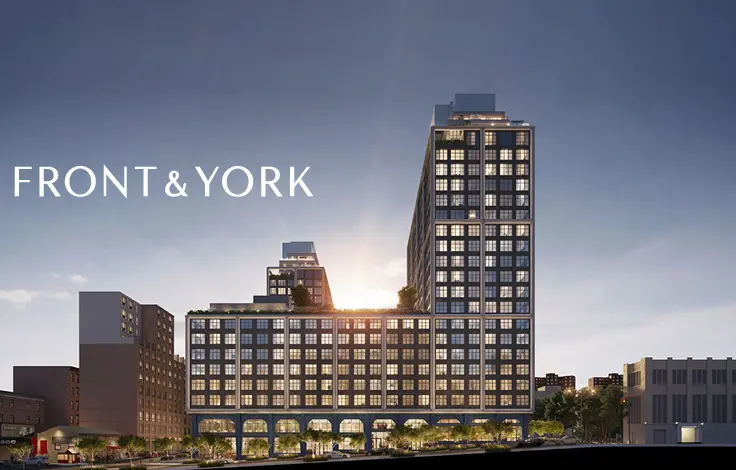
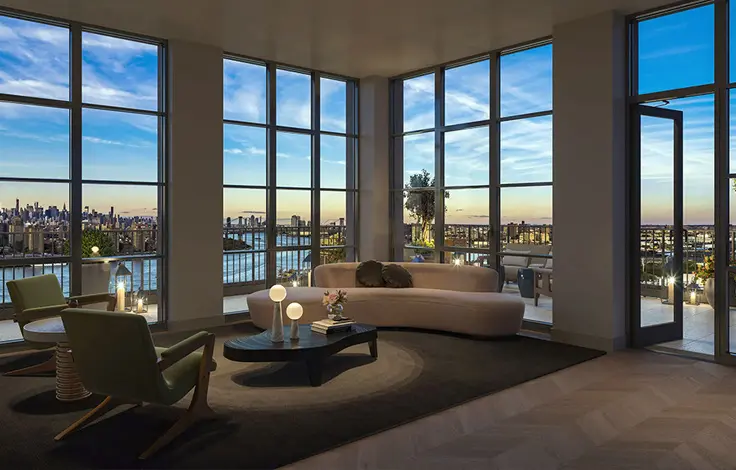

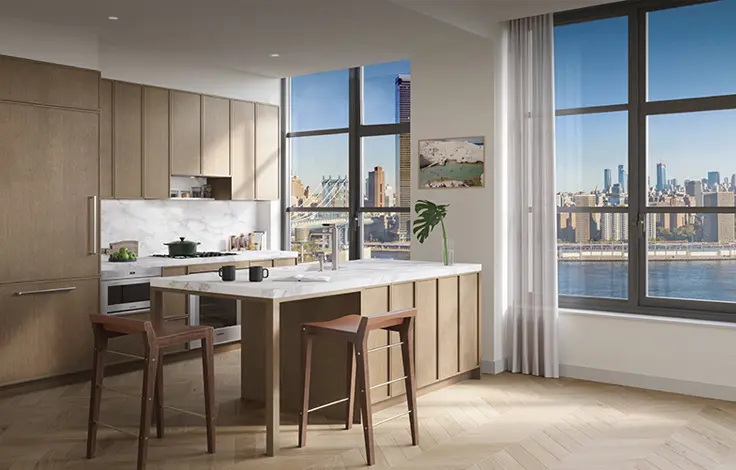
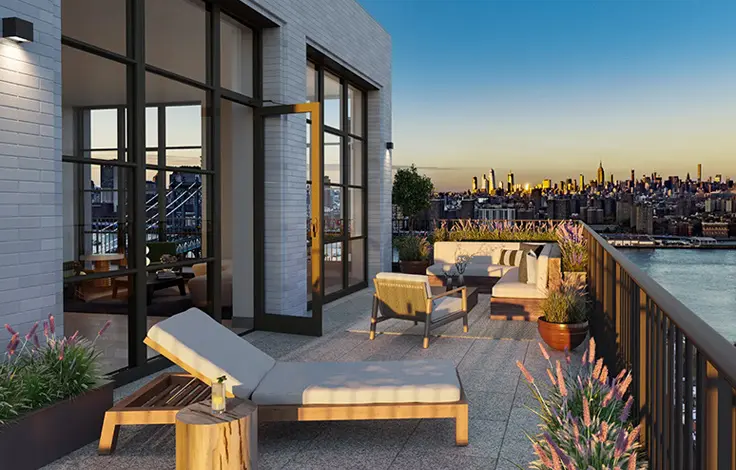
 6sqft delivers the latest on real estate, architecture, and design, straight from New York City.
6sqft delivers the latest on real estate, architecture, and design, straight from New York City.
